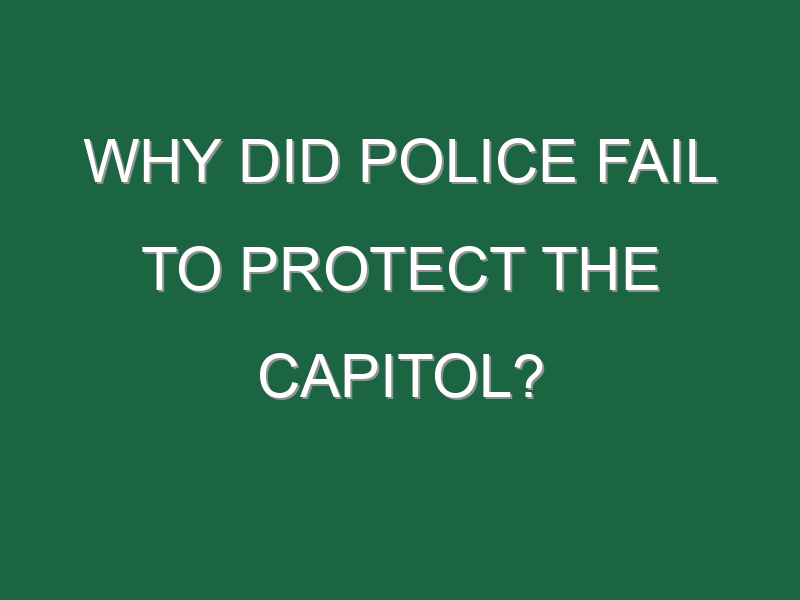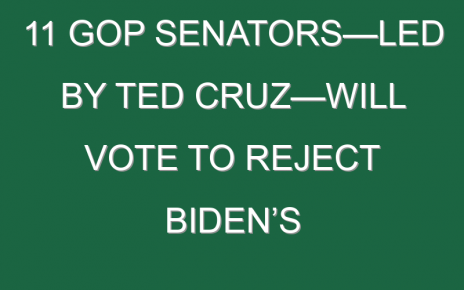Our mission to make business better is fueled by readers like you. To enjoy unlimited access to our journalism, subscribe today.
Wednesday’s mob attack on the U.S. Capitol has many dire implications for U.S. politics and culture. But at the heart of it is a seemingly simple question: How did a ragtag group of civilians manage to overwhelm the defenses of what should be one of the country’s most secure buildings?
Failures at many levels left the Capitol functionally undefended for as much as two hours on Wednesday, and there are still many unknowns. But based on available evidence, policing experts lay blame above all on planning failures by the leadership of the U.S. Capitol Police (USCP), a body of more than 2,000 officers charged with protecting Congress.
Those failures triggered the resignation of USCP Chief Steven A. Sund late Thursday. Before resigning, though, Sund attempted to justify his department’s failure, saying that while the USCP had “a robust plan” to deal with a planned demonstration, the day’s turn to “criminal riotous behavior” was unexpected.
Experts on protest and riot policing found that explanation at odds with the widespread standard practice for managing even truly peaceful demonstrations.
“Any time you have a crowd event, it’s a hope for the best, plan for the worst type of scenario,” said Edward Maguire, director of the Public Safety Innovation Lab at Arizona State University. “As long as there’s no current violence, you deploy regular uniforms and use lots of communication and de-escalation. But you always have several levels of a plan behind the curtain,” including more heavily armed and armored riot police.
Instead of preparing for the worst, USCP declined offers for backup from both the Pentagon and the FBI in the days leading up to the events. It’s also unclear why USCP believed the event would be uniformly peaceful: Much of the rally planning by the rioters took place on public social media sites, and included a large number of explicitly violent threats.
“Every one of these police departments has their own intelligence units that should be out there scouring social media and being plugged into the intelligence products being distributed by federal agencies,” says Maguire. The Capitol Police, Maguire adds, are “not a particularly small department.”
There are two other likely factors in what happened, each tied in different ways to the Black Lives Matter protests that erupted over the summer of 2020.
“Police agencies were rightfully criticized for taking a very aggressive, kinetic response to some of those earlier protests,” says Seth Stoughton, a former police officer turned criminal justice professor at the University of South Carolina. USCP may have felt pressured to take a lighter touch based on that recent experience, with disastrous consequences.
The fact that right-wing demonstrators were more likely to be armed may also have led the USCP to take a less militant approach to reduce the risk of deadly violence. But even by that logic, Stoughton finds the lack of more heavily equipped backup impossible to explain.
“I can’t resolve that tension … It doesn’t make sense at a purely tactical level,” says Stoughton. “If we have an armed crowd, we might say, we’ll have a soft touch at the front. But we’ll stage the resources that we need if things go south.”
Stoughton also believes the weak preparation for the Stop the Steal protest reflects the same biased policing that Black Lives Matter activists marched against.
There was a “pretty apparent discrepancy in the level of threat that some agencies perceived between a crowd of Black Lives Matter protesters and a crowd of right-wing protesters,” Stoughton says. “I don’t think we can just say racism, period, and that’s a sufficient explanation. But I do think that’s part of the explanation.”
In other words, USCP may have felt less threat of violence from armed and mostly white Stop the Steal marchers than from unarmed and racially diverse Black Lives Matter demonstrators, based on biased perception of the groups’ different racial makeup.
Whatever the mix of causes, the planning failure left USCP officers on the ground overwhelmed. That led to some moments that appeared to show police tolerance or even collaboration with rioters trying to enter the Capitol.
In one video widely circulated on social media, a USCP officer appears to pull aside a barricade and let marchers within the cordon surrounding the Capitol. This has been widely interpreted as police aiding the rioters, but reporters on the scene described the officers as overwhelmed by the mob, and Stoughton says the withdrawal was in line with standard tactics in such a situation.
“You pull back to a different position. If you can, you take the barricades with you.”
Similarly, Stoughton believes the relatively small number of arrests during the riot was a function of inadequate staffing. “It doesn’t make a hell of a lot of sense for me, on my own, to try and arrest 15 or 20 people.”
“The failure is not on those individual officers failing to engage in some sort of reckless last stand,” says Stoughton. “The failure is that they were in that position in the first place.”
Regardless, ASU’s Edward Maguire believes Wednesday’s events will only add to a widespread perception that police in the U.S. are biased towards right-wing causes.
“There’s a really strong sense on the left that police are … operating almost in partnership with the right,” says Maguire. “And when I talk to right-wing protesters, I hear from them, ‘They’re on our side. We have god on our side, and we have the police on our side.’”
That, Maguire says, is a long-term threat to policing efforts.
“We need people in a democracy to have trust in the legitimacy of law enforcement, and not imagine that help will be contingent on our political beliefs.”
Regardless of its causes, then, the USCP’s failure adds one more deep scar to the many inflicted on January 6.
More politics coverage from Fortune:
- “We will never concede”: How Donald Trump incited an attack on America
- Democrats plan to use Senate win to pass $2,000 stimulus checks
- Photos: A look at the nationwide riots on Wednesday
- Attempted coup at Capitol presents key opportunity for cyberattack, experts warn
- Betting odds heavily favored Georgia’s GOP candidates, then suddenly collapsed. What went wrong?



